Porto Portugal: What to Do in 2 or 3 Days
Find out what to see in Porto, Portugal, in this short guide that will take you to discover a city full of a charming melancholy.
It’s true, there are few certainties in life, but if there’s one thing to do in Porto, it’s a tour of the cellars of the wine of the same name.
But, in addition to this, have you wondered what are the things to see in Porto, Portugal? First of all, you must know that there are quite a few places in this town that deserve your attention.
But you won’t have the slightest problem reaching them on foot (also because you will have to dispose of all the Pastel de Nata you will eat during the trip ;-).
Let’s go step by step and discover together what to see in Porto, food included!
Table of Contents
Things to do in Porto
Crisscrossed by typical and artistic trams and full of narrow pedestrian streets, Porto is as romantic as it is melancholy.
Immerse yourself in the beauty of the city and walk the narrow streets full of history and “saudade” (saudade is a term that symbolizes a form of melancholy, a feeling akin to nostalgia that characterizes Porto), but also indulge in the typical experiences of this area of Portugal.
Read on to find out which Porto must-do activities you should add to your 2- or 3-day itinerary.
By the way, are you looking for an accommodation to stay overnight with good value for money? Check out Bnapartments Rio.

Itinerary Day 1 in Porto
Porto is a city with a charm that is difficult to describe in words.
A city that moves you at the mere sound of a trumpet in the streets.
A place that excites you as you listen to the cry of a seagull from the Dom Luís I Bridge, observing the city in all its beauty.
A city where the wind ruffles your hair and shakes your soul.
“O Porto não é um lugar, é um sentiment”, which translated means “Porto is not a place, it is a feeling”, is the most famous phrase dedicated to this city, written by Agustina Bessa-Luís.
I must admit that the writer got it right: not because Porto is yet another beautiful city, but because it is a city with a particular atmosphere, comparable to that of Naples (I am aware that they are 2 very different cities, but the sense of melancholy that distinguishes them is very similar).
1: The Church of the Clerics
As soon as you get off the bus that will take you to the centre, you cannot fail to notice the Church of the Clerics, famous for the bell tower which you can climb to get an excellent view of Porto.
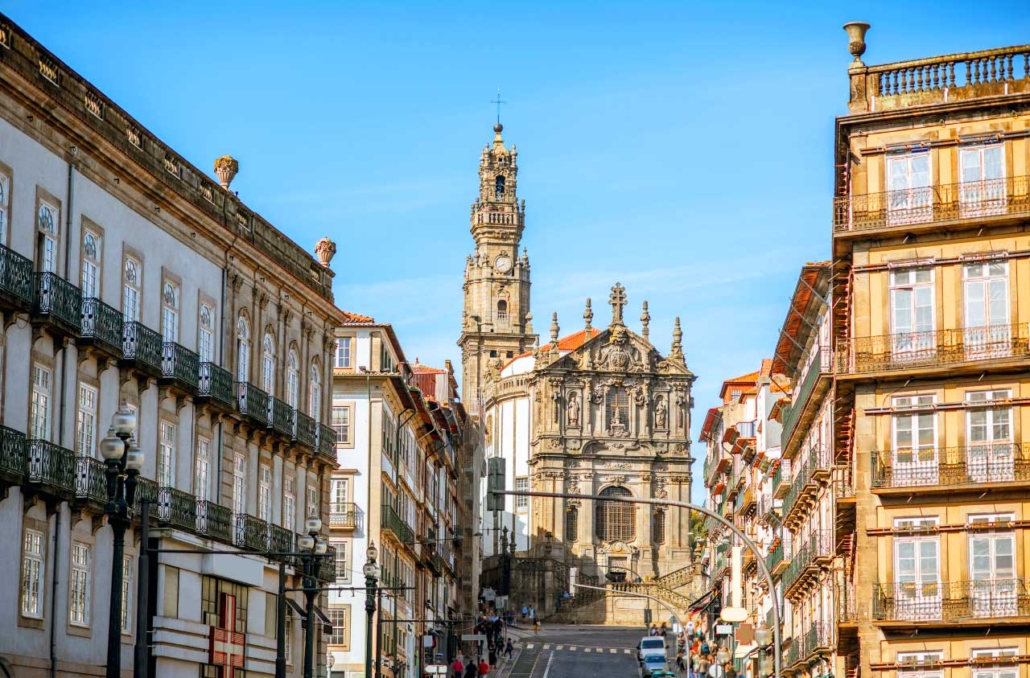
2: The Garrett Monument
Continuing along the main road you will easily reach the very center of Porto: the Garrett Monument is located in the center of the square.
A great place to take a souvenir photo near the word “Porto”.
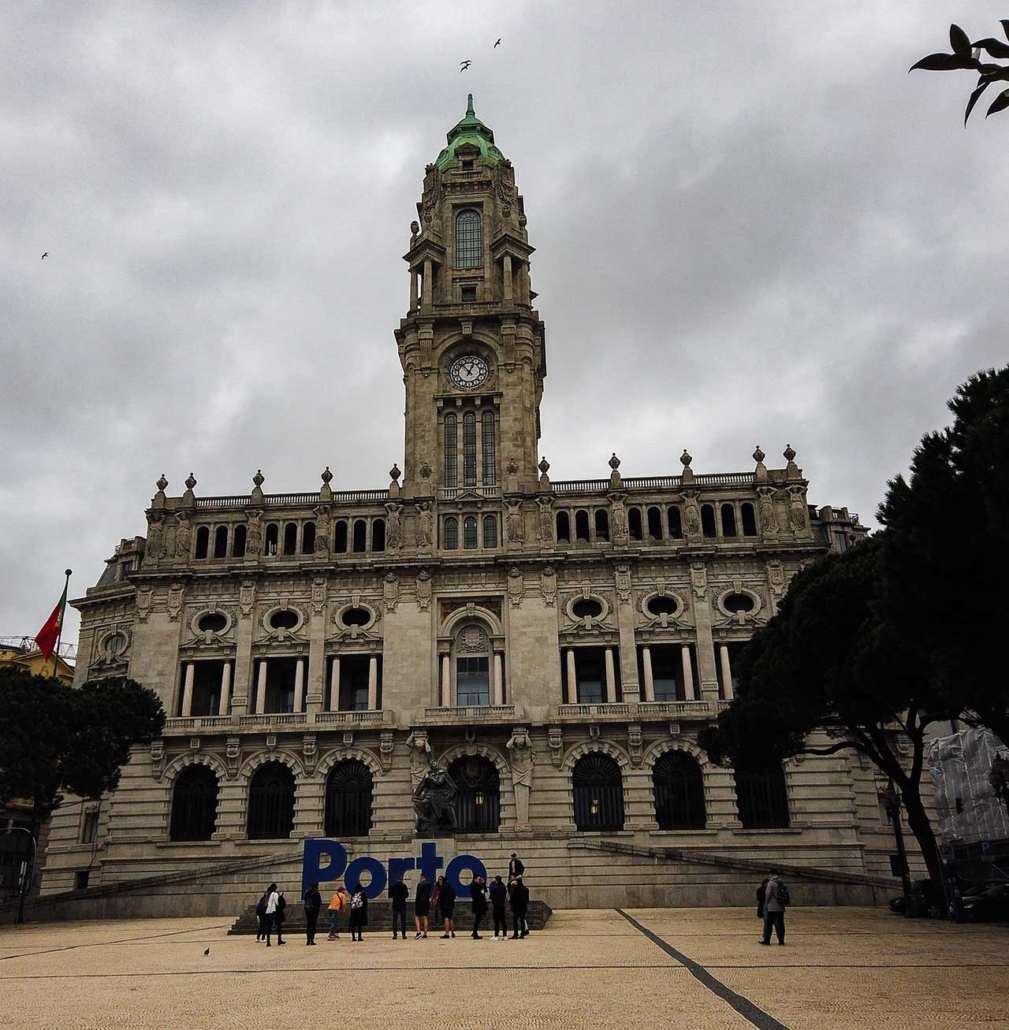
3: Chapel Almas de Santa Catarina (Chapel of Souls)
A church located along the shopping street, Rua Catarina, with azulejo covering its outer walls.

4: Igreja de Santo Ildefonso: a must see in Porto
Another structure in which to admire the beauty of these bright blue tiles is the church of Sant’Ildefonso (which you can see in the photo below, behind the famous tram 22).
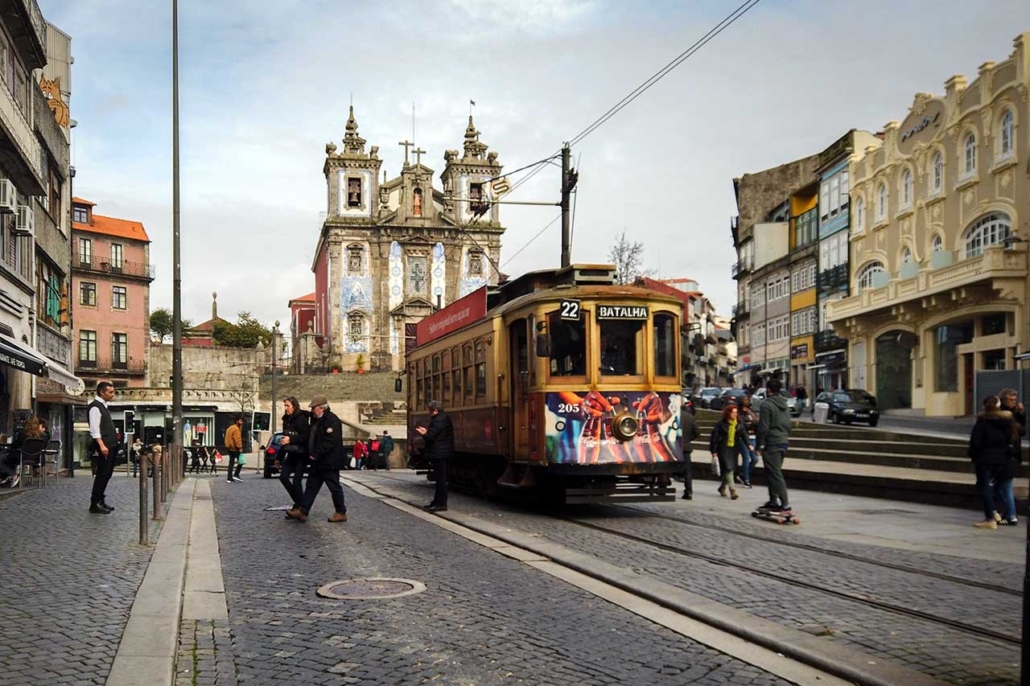
5: São Bento railway station
A little further on, there is the São Bento railway station, built in 1800. Come in even if you don’t have a train to take: inside the station, you will immediately understand that you are in the most beautiful station in Europe.
The very blue azulejo that decorates it tells the story of Portugal in almost 20,000 painted ceramic tiles.
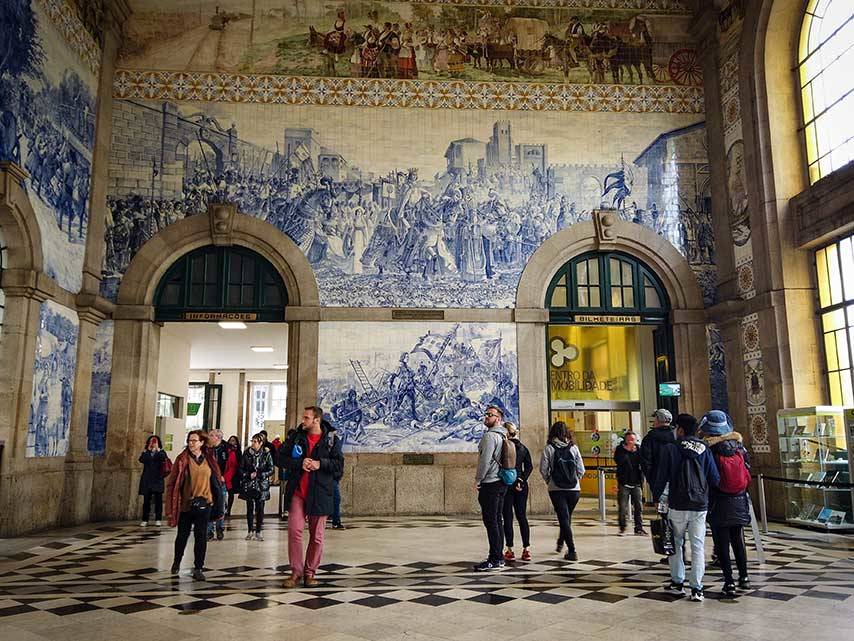
6: Porto Cathedral
The Porto Cathedral is one of the must-see things: it is not far from the station.
You’ll recognize it immediately: it’s a fascinating and majestic building, with a great view over the city and that pinch of saudade that I’ve also tried to bring to this video.
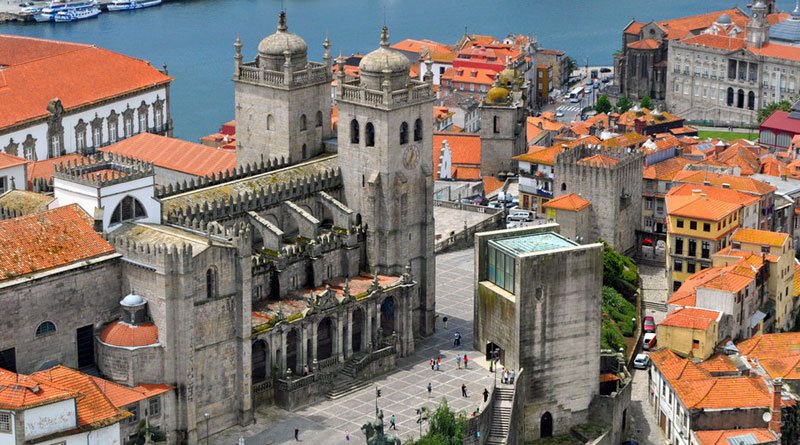
7: The Ribeira district
Going down the steps, along narrow alleys, you arrive on the banks of the Duero river.
The Ribeira district runs along the river and takes on a veil of extreme charm or extreme melancholy, depending on the weather.
The sun’s rays amplify its immense beauty (not for nothing a UNESCO heritage site), or a storm front, accompanied by the cry of flying seagulls, enhances that right touch of melancholy.
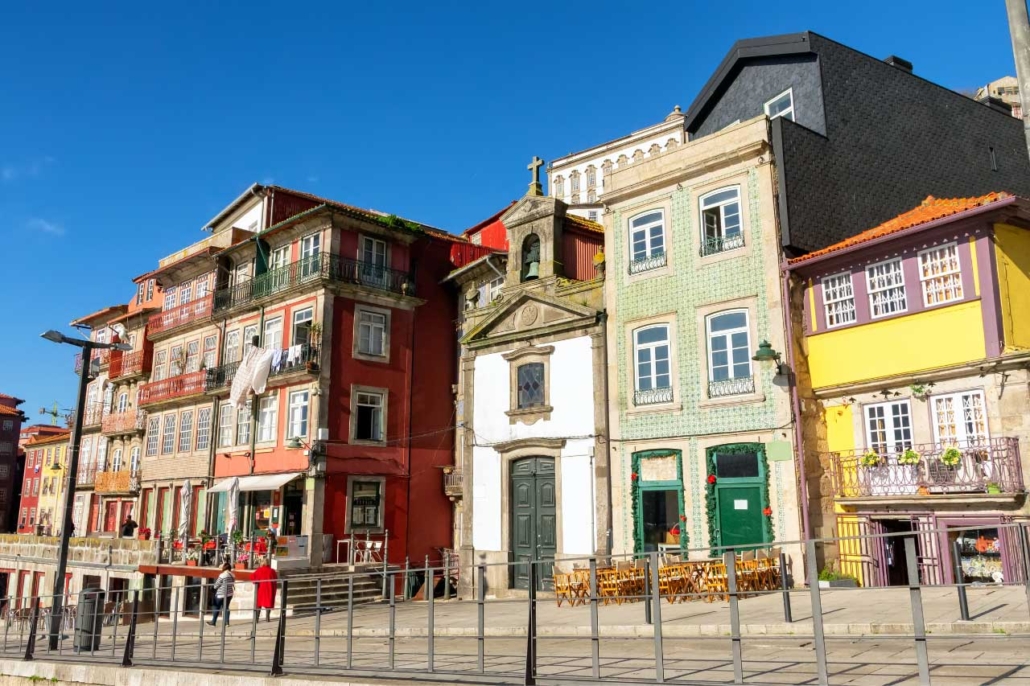
8: Dom Luís I Bridge: a must see in Porto
To amplify the charm of the historic center, the Dom Luís I Bridge stands out over the Duero River .
An iron bridge, which can be crossed on 2 floors: the lower floor serves as a connection for cars, but can also be crossed on foot.
Pay attention to the narrow sidewalk, slippery in the rain and wind.
The highest floor, on the other hand, is used by the subway, but can also be crossed on foot: it is certainly the one with the most suggestive view.
This bridge connects Porto with Villa Nova de Gaia.
It is the most symbolic and characteristic place in the city of Porto.
The bridge was built by none other than an engineer who had worked with Eiffel.
Just remember one thing: pay attention to the wind!
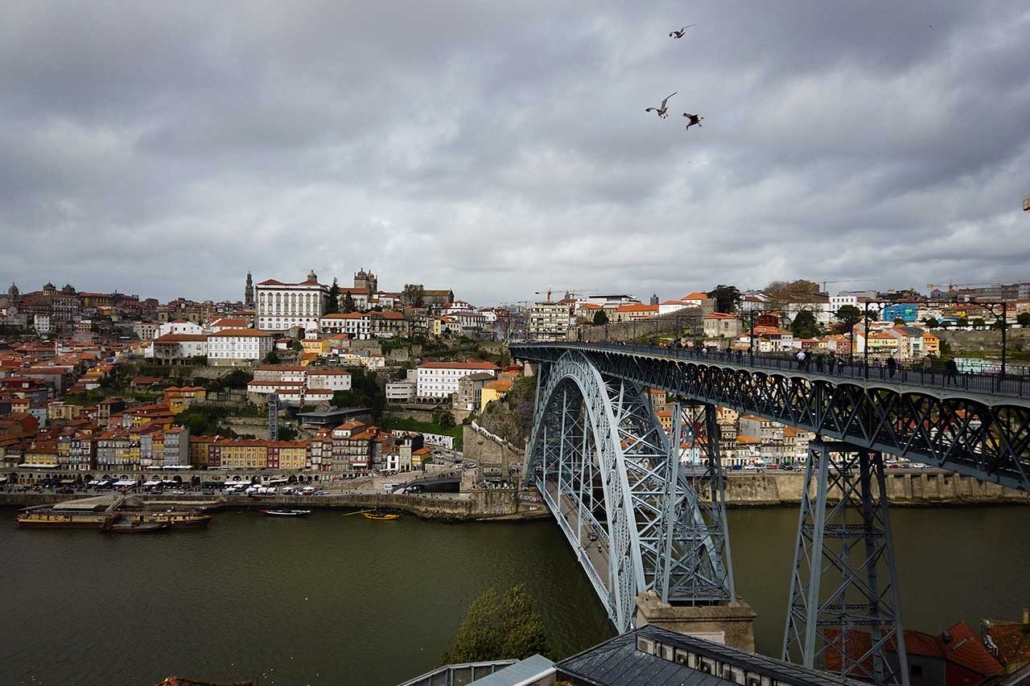
9: Evening Fado show
End your visit of the city by discovering the true essence of Portugal, attending a fado show after admiring the city lit up at night.

Day 2 of Porto Itinerary
On this second day, treat yourself to a tour of alternative Porto.
This will lead you to discover the Bolhão district (one of the most authentic in my opinion), taking a dive into the past between ancient cafés and historic theatres.
1: Vila Nova de Gaia
Continue this second day of itinerary in Porto from the opposite bank of the river.
After crossing the bridge, you will arrive in Vila Nova de Gaia, on the opposite bank from Porto.
This is where most of the port wine cellars are located, which I recommend you visit before lunch time.
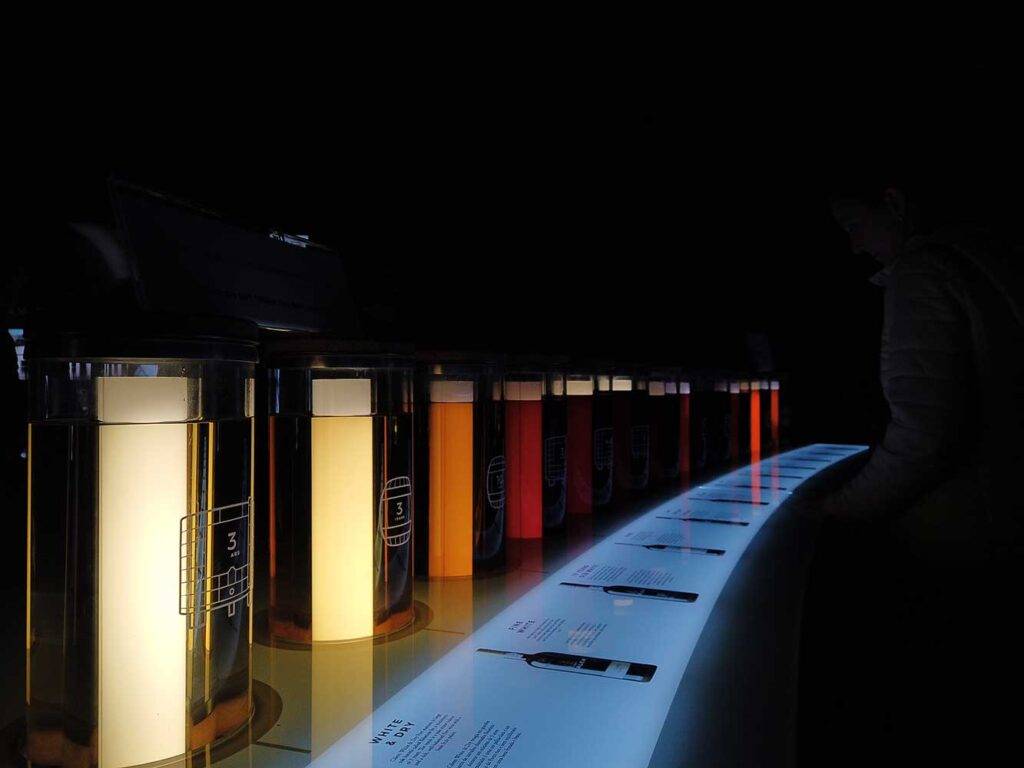
2: Visit of the port cellars
Discover the origin of one of the most famous wines of Portugal, visit the cellars and discover the secret of the fortified taste of port wine.
The cost of a visit to the cellars starts from €13 for a minimum duration of about an hour.
Please, treat yourself to a hearty breakfast first! Choose whether to participate in the visit of a single cellar or more, among the most famous, including:
- Guided tour of the Burmester cellar (from €13);
- Cantine Cálem (from €14);
- Visit to the Poças cantina (from €15).
How long does the visit to the Port cellars last? It’s up to you (and your alcohol tolerance): it can last an hour or a whole day depending on how many wineries you visit.
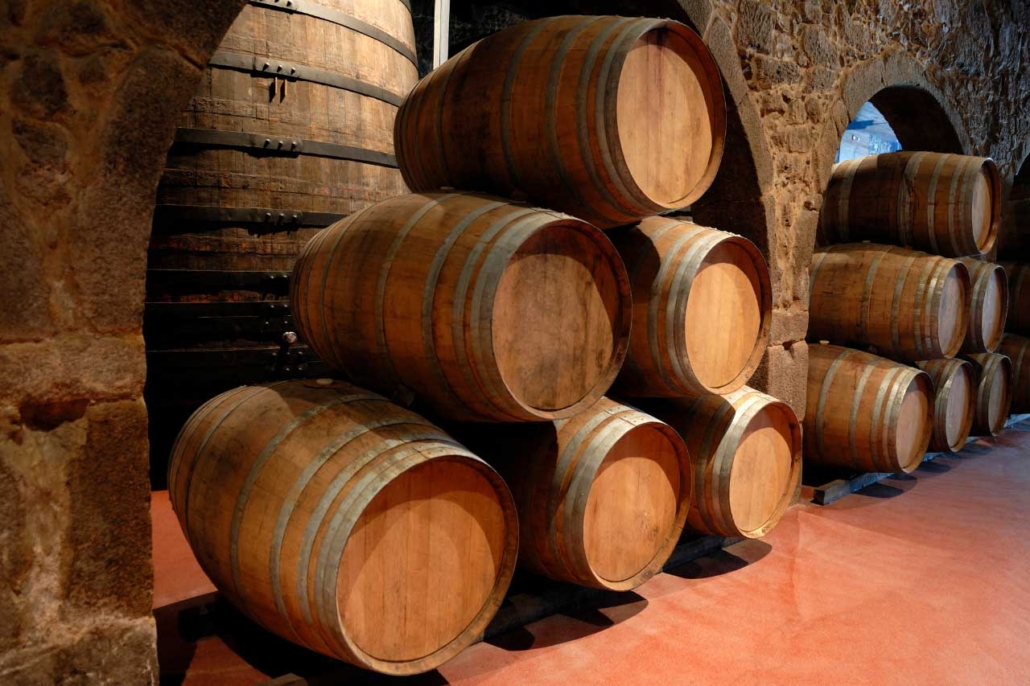
3: Cruise of the 6 bridges: one thing to do in Porto
The 6 Bridges Cruise is one of the most popular tourist attractions in the city.
In the afternoon, get on board, sail the Duero and pass under the most famous bridges that connect one side of the river to the other, either with a day cruise or with a ride on a sailing ship at the most romantic moment of the day: sunset.
Choose the cruise that departs from Porto or from Vila Nova de Gaia according to what you find most comfortable, or opt for a sailing ship ride at sunset:
- Cruise from Porto (from €15);
- Cruise from Vila Nova de Gaia, departing from the opposite bank of the Duero River (from €15);
- Sailing boat ride at sunset (from €55).
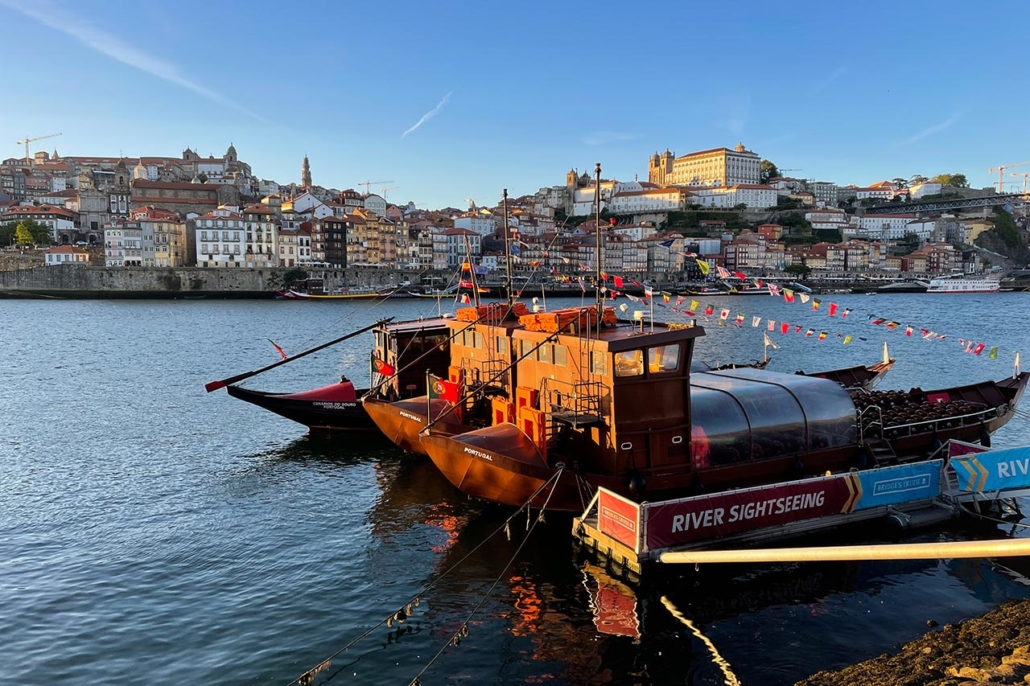
4: Cloisters of the Monastery of Serra do Pilar
Crossing the Ponte Luís I bridge from the upper side, however, you can reach the Claustros do Mosteiro da Serra do Pilar: a monastery positioned just above the bridge, with a view that is nothing short of breathtaking over Porto.

Day 3 in Porto Itinerary
If you have 3 days to visit Porto, I suggest you deepen your visit to the region by participating in a vineyard tour in the Douro Valley.
Alternatively, take a free tour of street art or medieval Porto.
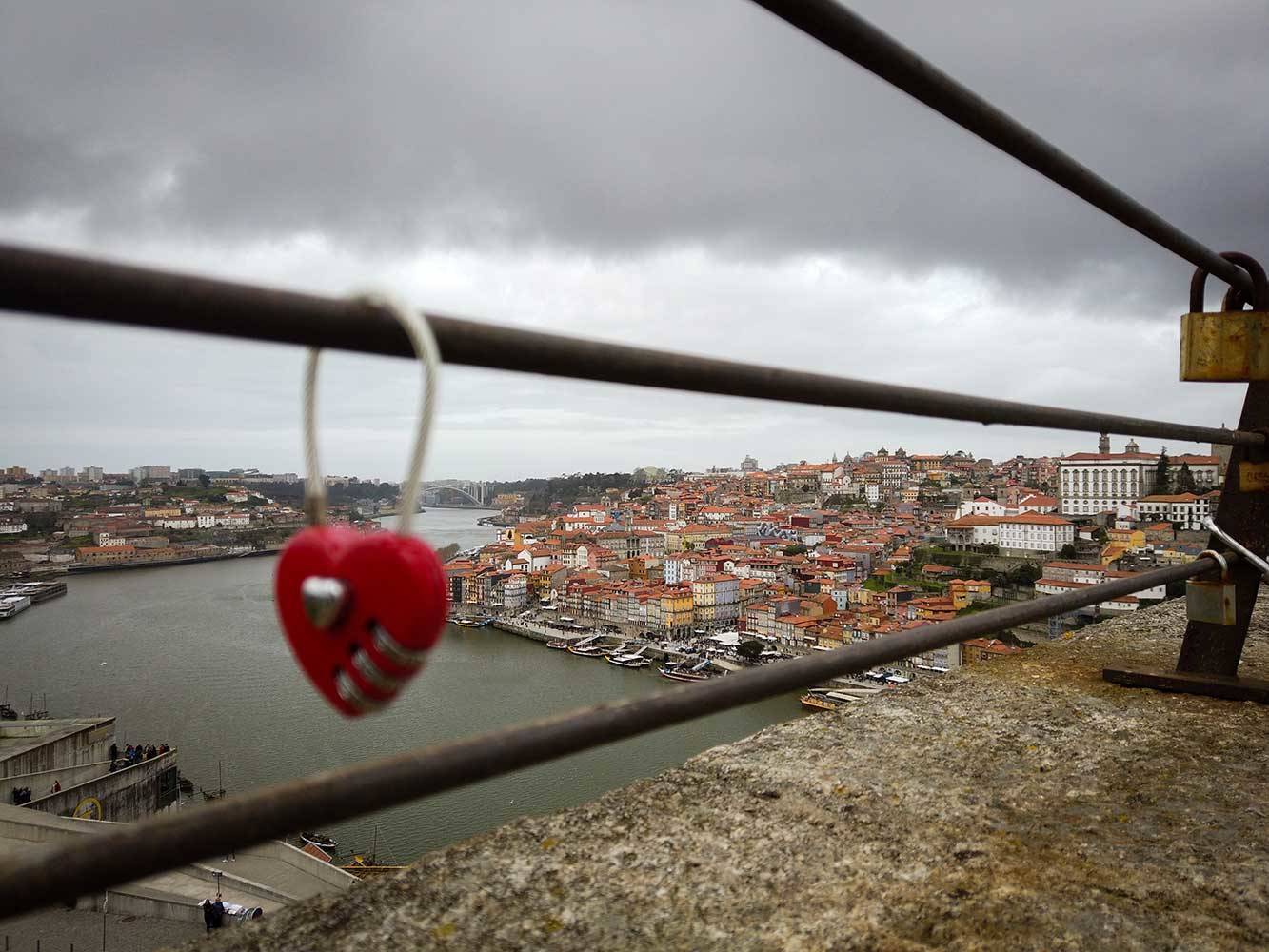
Accommodation
For your stay in Porto, I recommend bnapartments Rio if you are looking for accommodation with good value for money.
These lodgings are real apartments, in a convenient location for visiting Porto, but with a nice view of the Duero River.
A functional and economic accommodation at the same time.
To stay in the heart of Porto, however, consider Oporto Invite Clerigos or The Passenger Hostel, if you’re looking for a hostel.

When to go to Porto
The climate in Porto is mild Oceanic.
This means that the rains are frequent throughout the year and the climate is rather humid.
Winter is not excessively cold (with lows around freezing), but showers are frequent in the months of November, December, January, February and March.
Therefore, if you go between December and March, bring a nice umbrella or raincoat with you and know that the weather may not be the best.
Between July and August, on the other hand, temperatures are around 30-35°C: watch out for sunstroke.
The remaining months of the year (April, May, June, September and October) are perfect for discovering the city, thanks to the mild temperatures.
How to get to the center of Porto from the airport
If you’ve been wondering what to see in Porto in Portugal, you’ll probably also want to know how to get to the city center to start your visit.
If you are flying to Porto from Francisco Sá Carneiro Airport and wish to use public transport, you will need to take bus 601 or 602, just outside the airport exit.
Bus rides are really cheap: buy a single ticket on board for around €2 and get off at the “Cordoaria” stop.
In less than an hour you will find yourself in the center of Porto.
Take a look at the route on Google Maps to understand better.
From here you can consider having the city in hand! For greater convenience, you can also opt to book a transfer that can take you from the airport directly to the hotel (and vice versa) or again, use the Porto metro, but you will probably have to make at least one change.
PS Also remember to hop on one of the artsy trams that criss-cross the city.
What to eat (and drink) in Porto
1: Cream cake
A sin of the throat of the devil himself, who came down to earth to show that he loves us badly (but so much for our chubby hips).
Pastel de nata are puff pastry desserts filled with cream, served warm with a pinch of cinnamon (they seem light and harmless, but when you pick them up you’ll realize that’s not the case!).
There are entire pastry shops dedicated exclusively to Pastel de nata: I advise you not to dwell on the first shop that sells them, but rely on these specialists.. trust me, it’s a completely different experience!
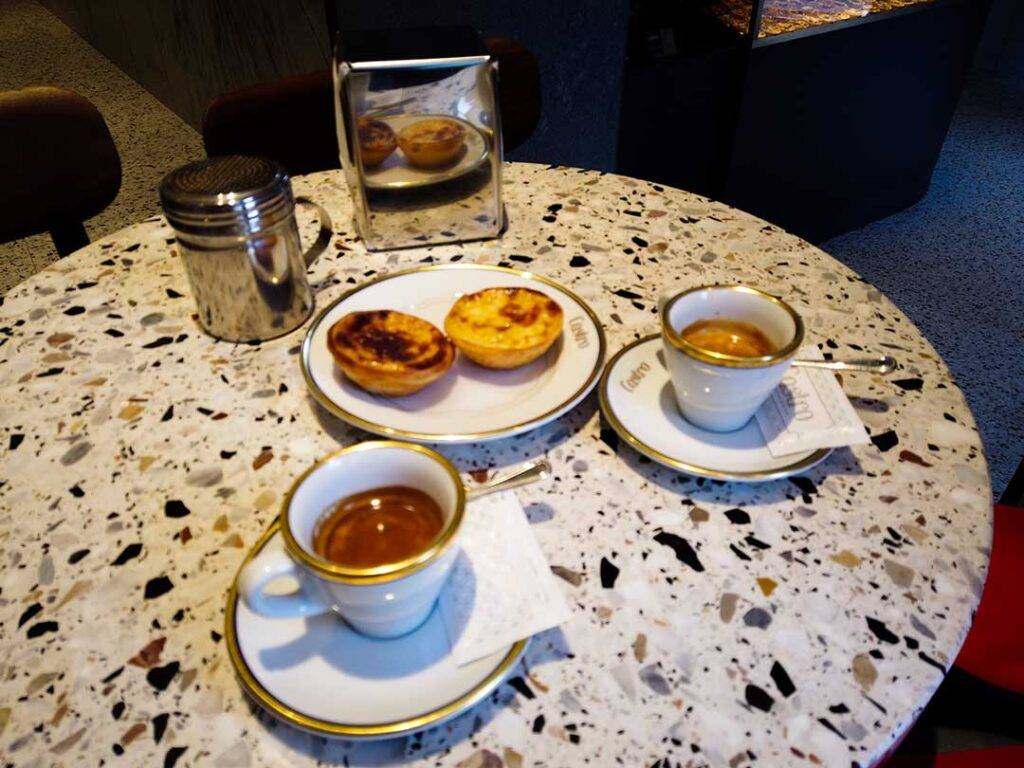
2: Port wine
The famous Port wine is a Portuguese fortified wine, born exclusively from vineyards located along the banks of the Duero river, in northern Portugal.
Every restaurant serves it, but the thing I recommend you do first is visit the homonymous cellars and find your favourite.
3: Canned fish
In Porto you will see shops piled high with boxes of fish everywhere, mostly sardines, tuna and mackerel.
4: Francesinha
A sandwich stuffed with ham or meat and covered with cheese.
Things to know about Porto (and Portugal)
1: Portuguese Azulejo
Many buildings and houses in Porto have tiles on their facades, but they are not simple tiles: they are azulejo.
The azulejo is a typical Portuguese and Spanish ceramic ornament with a glazed and decorated surface.
Many churches have these decorations on their exterior.
You can also find an example of it inside the São Bento train station, where there are scenes from the history of Portugal represented with the azulejo.
It goes without saying that the beauty of this station is remarkable!
The locals are also convinced that in the station there is the ghost of a nun who lived in the convent that once stood in the place of the station.
So, just to tell you that Porto is a city of a thousand mysteries and facets.

2: Portuguese cork
Portugal is the world’s leading producer of cork, so much so that it is called “the green gold of Portugal”.
You won’t be able to go home from your visit to Porto without having bought some cork souvenirs: bookmarks, key rings, magnets and even cork bags and backpacks.
FAQ Questions with answers
What to do in Porto (Portugal)?
1: A free walking tour of the city lasting 2:30h
2: The visit of the cellars in Vila Nova de Gaia, located on the opposite bank of the Duero from Porto, on the southern bank;
3: A boat ride along the Duero river, with the cruise of the 6 bridges of Porto.
What to see in Porto?
The Ribeira district, the São Bento train station, the azulejo-covered churches, the Dom Luís I Bridge and the Porto Cathedral are just a few things to see.
What to eat in Porto?
From pastel de nata desserts to tinned fish.
From the marchinha, a stuffed sandwich covered with cheese (loved by the Portuguese to sober up), to the liqueur Port wine.
Leave your comment if you want to share your experience or add more things to see in Porto.
Are you going to Portugal? Read also:
- 10 Days in Portugal: Ultimate 10-Day Portugal Itinerary
- 3 Days in Lisbon: Ultimate 3-Day Lisbon Itinerary with Map



